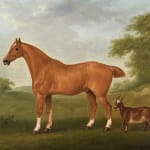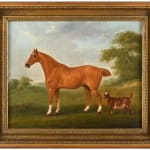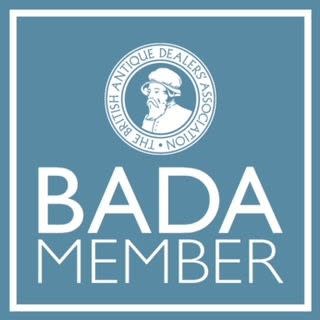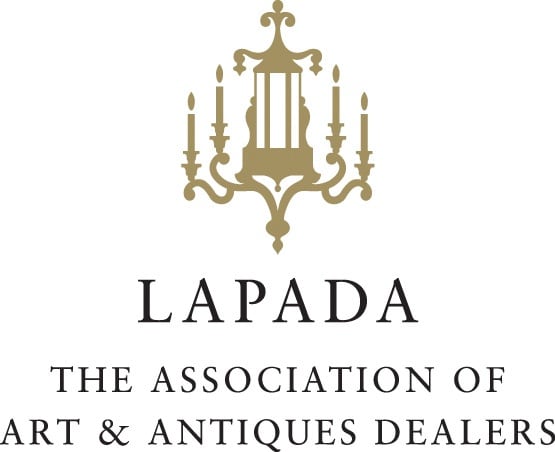John Nost Sartorius (1759-1828)
Provenance
Private collection, SomersetLiterature
Sally Mitchell, ‘The Dictionary of British Equestrian Artists’, 1985.An 18th century painting of a chestnut horse and a companion goat standing beside one another in landscape, by John Nost (or Nott) Sartorius (1759-1828). Signed and dated 1780, lower right.
John Nost Sartorius was the son of horse artist Francis Sartorius and the grandson of John Sartorius. He specialised in horses, dogs and cattle and received commissions from the leading sportsmen of the day, such as the Prince of Wales, the Earl of Derby, Lord Foley and Sir Charles Bunbury, and his pictures (some of them of large size) were found in many country houses. He preferred to be known as John N. Sartorius Jr. to distinguish himself from his father and grandfather.
From 1781-1824 his name appeared as an exhibitor in the catalogues of the Royal Academy, and a list of the 74 pictures which he showed there can be found in Walter Gilbey's in "Animal painters of England from the year 1650, volume 2". "The Sporting Magazine" from 1795-1827 contained many engraved plates from his works by J. Walker, J. Webb, and others.
Some of his best known pictures were portraits of the racehorse "Escape", belonging to the Prince of Wales, Sir Charles Bunbury's "Grey Diomed", a Mr. Robson's trotting mare "Phenomena", and the famous thoroughbred "Eclipse", from a drawing by his father (see "Sportsman's Repository" by John Scott, 1845). "A Set of Four Hunting Pieces" after his pictures, was published in 1790 by J. Harris, the plates being engraved by Peltro William Tomkins and James Neagle (1760-1822).
Of his sons, John Francis Sartorius was also an equine artist while the younger, Francis Sartorius Jr. ("the Younger") was a marine artist.





